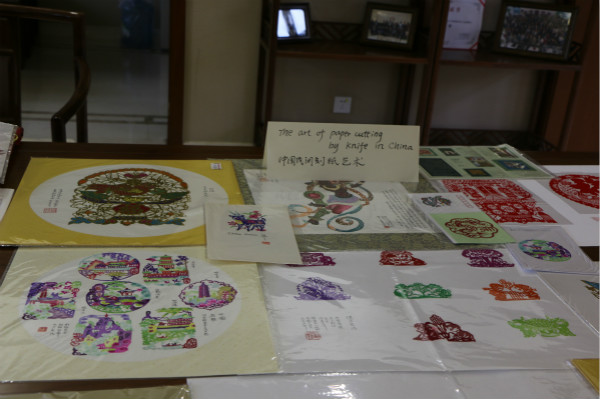On Tuesday, September 26, students at the Yenching Academy had the opportunity to practice traditional Chinese paper cutting under the tutelage of a renowned paper cutting expert, Ms.Liu Ren.

The event was attended by a number of students who were excited to learn more about Chinese history, culture and crafts. Ms.Liu started by introducing the history and culture of Chinese paper cutting. The art of Chinese paper cutting developed between the years 1200 and 1800. During this time, China had begun producing paper.

Despite the fact that early paper was rough and crude, paper cutters were still able to make intricate designs. As paper became more sophisticated and malleable, new styles of paper cutting developed. As the years passed, symbols from paper cutting began to appear on clothing, napkins, table settings, and more. Early paper cutting involved cutouts of flowers. Later, paper cutting was used to create renditions of different aspects of traditional Chinese belief systems. This is why, to this day, many Chinese paper cuttings include symbols such as “double happiness”, two fish, and the character for “good fortune”.

Chinese paper cutting also varies by region and ethnic groups within China. Ethnic groups from the north tend to make simple cut outs from the contrast between blank space and colored paper. In the South, paper cutting tends to be more intricate and contain different colors.

The instructor explained the different methods of paper cutting. She first demonstrated the cut out method, which involves cutting small shapes into a piece of colored paper. Then, she demonstrated the continuous cutting method, which involves making a single cut into a piece of paper and moving the hands, scissors and paper in coordination. Finally, students were given the opportunity to make their own cut outs.

The students made beautiful cut outs in the two different styles. Upon special request, Ms.Liu taught the students how to make the character for “double happiness.”The students learned that when this symbol is made on red paper, it is given to a couple that is getting married, whereas when it is made on white paper, it appears at funerals.

The students enjoyed learning a new craft and gaining a deeper understanding of developments in Chinese culture.
